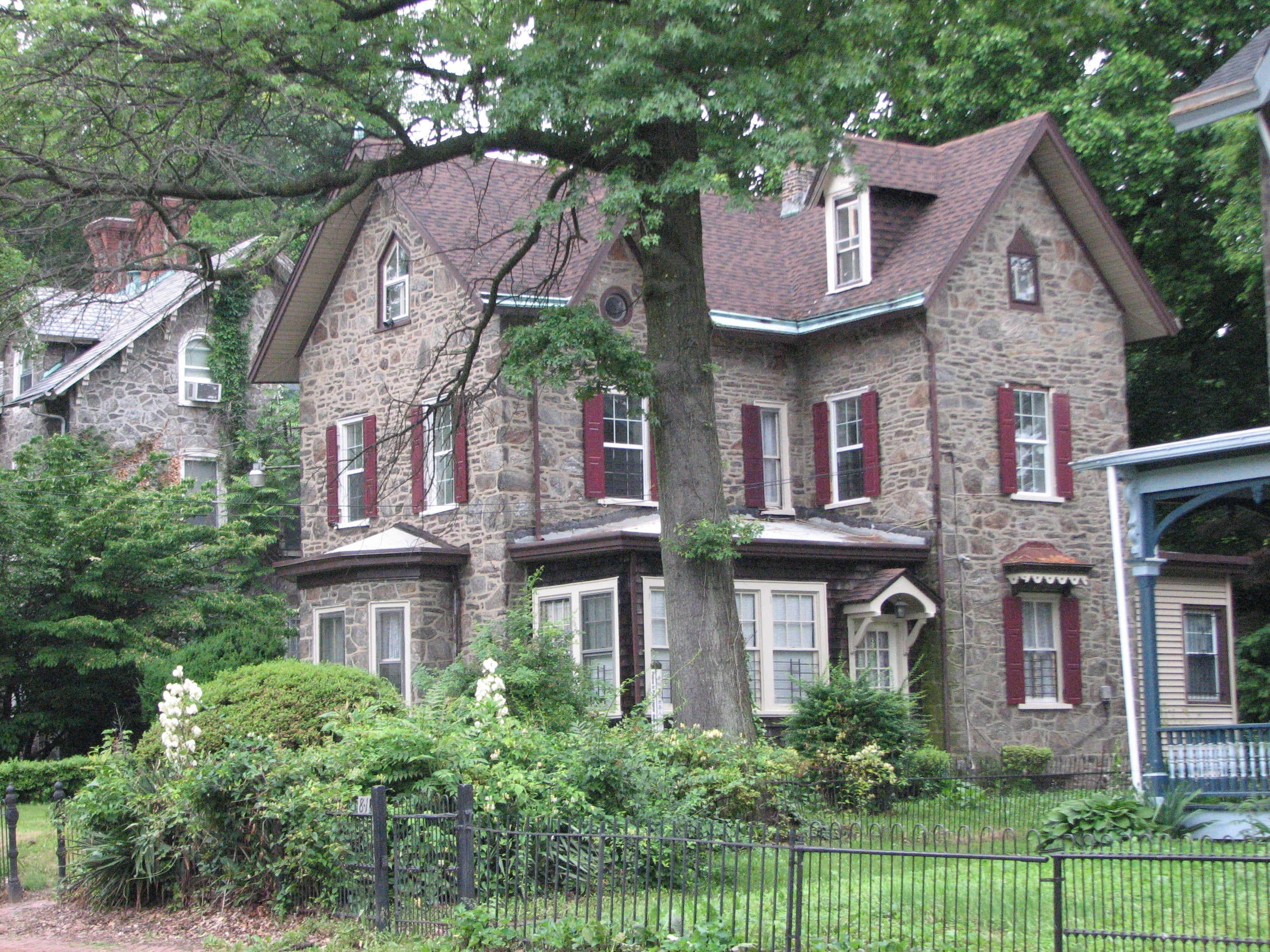Conference to focus on building strengths of ‘middle-market’ communities

The future of a neighborhood can be secured by preserving its past.
That’s one of the messages that will be shared at the Oct. 8 conference, “A Sense of Place: Preserving Philadelphia Neighborhoods,” on the Temple University campus. Coordinated by the Preservation Alliance for Greater Philadelphia, the second annual gathering will bring together groups from throughout the city that are trying to revitalize their communities.
Last year, the conference drew 140 participants who wanted to learn how to utilize their historic resources and other community assets to strengthen their neighborhoods. They took away information from the workshop leaders and from their counterparts throughout the city.
“Some of the people in that crowd at first didn’t realize what they could learn from each other,” said Patrick Hauck, the director of the Alliance’s Neighborhood Preservation Program. “When they got to the sessions, they realized their commonalities.”
This year, the conference organizers have heard from many other interested parties. “We have the smaller groups within neighborhoods touching base with us – friends of library groups, friends of the park groups, church organizations,” Hauck said. “So we’re getting the impact we wanted, which was to get more people thinking about preservation and their sense of place.”
The conference will include the rollout of the Alliance’s new Vital Neighborhoods Initiative, which aims to strengthen “middle market” areas, those neighborhoods that are relatively stable but could benefit from improvement projects that focus on their assets and encourage housing sales and investment.
The initiative is modeled after a successful program under way in Baltimore called Healthy Neighborhoods. The keynote speaker at the Philadelphia conference will be Barbara Aylesworth, the senior program coordinator of the Baltimore effort.
“We want people to hear about the program from the perspective of another city that has been doing it for a while. Part of the challenge of Vital Neighborhoods is getting people used to the concept of not looking at the most struggling neighborhood or the one that’s up and coming. We’re looking at the one that can go either way,” Hauck said. Aylesworth will provide that “experiential viewpoint.”
The Philadelphia program should not instill the “fear of gentrification,” Hauck said. The idea is to “help communities improve themselves.This has to be an improvement that’s for and about the neighborhoods themselves and the people who live there. It’s not about preparing it for the next batch of people who are going to come in when it gets better.”
Using modest interventions
The success of the Baltimore program is that “it has proven to be a very effective revitalization strategy for middle-market neighborhoods,” Aylesworth explained in a recent interview. “Before we started this approach, there was very little attention given to neighborhoods that have strong owner-occupant rates and were destinations for a lot of first-time buyers, including city workers, teachers and hospital employees. But many of these areas were experiencing early signs of distress. They didn’t have the resources to push the market up and reverse the early decline.
“In many cities, the traditional approach to revitalization is, go to the most distressed areas and spend enormous amounts of money on redevelopment,” she said. Healthy Neighborhoods focuses on neighborhoods where “modest interventions will stimulate market activity.”
The program concentrates on pushing up home values, improving the physical environment, and raising the visibility and image of the neighborhoods. “Really fundamental to this approach is strengthening social cohesion,” Aylesworth said. Older neighborhoods often have a mix of new and longtime residents. Some of the older people have moved on to retirement communities or the suburbs. “The area is in transition, and people don’t know their neighbors anymore. So we put an emphasis on helping to promote resident self-management, getting neighbors to work together on the block level to manage their concerns, including getting engaged in improvement projects that lift curb appeal.” Residents are also encouraged to get together socially, at pot-luck dinners and block parties. And they are encouraged to be marketers for their neighborhood, speaking positively about its best points and inspiring others to buy houses there.
PlanPhilly recently launched Participate, a portal for neighborhood associations, leaders, and community members to add to the dialogue about the built environment. Folks can post news and opinion articles and contribute conversation about important topics like the public realm and zoning reform. Join the conversation today!
The measure of the program’s success, Aylesworth said, has been seen in the increase in property values and the number of days a property stays on the market on a target block as compared to the rest of Baltimore. It also can be seen in the number of “curb appeal block projects” completed and the number of home improvement permits issued.
The Healthy Neighborhoods program has used a combination of tools to realize its goals. Chief among them: a $40 million loan pool, of which $13 million remains. The funds are provided by seven local lenders, and the loans have been guaranteed by local foundations and the Maryland Housing Fund. The money has been used to finance the purchase of properties and for low-interest rehabilitation loans on target blocks. “We require borrowers to improve the exterior of the home, which sends a message that there is an investment going on,” Aylesworth explained.
The Baltimore program also emphasizes “resident activity.” It provides smaller, $3,000 grants for block improvement projects, such as installing dusk-to-dawn porch lights on a block, or tree-plantings and flower boxes. There are grants for marketing events, as well, such as street festivals and house tours.
Inspiring larger projects
The Philadelphia program has also found that mini-grants are a great incentive. Small neighborhood preservation project grants attracted 10 applications at the first Sense of Place conference. This year, 16 applications have been received for the two $1,000 and two $1,500 awards, Hauck reported.
They have come from a range of neighborhood organizations, including Happy Hollow Playground in Germantown, Chinatown Development Corporation, South Kensington Neighborhood Action Committee, Village of Arts and Humanities, South of South Neighborhood Association, and Tree House Books in North Philadelphia. Their proposals include documentary films, tours, signage, surveys, publications, educational programs, festivals, spoken word/image presentations – “some very creative approaches,” Hauck said. The four winners will be announced at the conference.
The emphasis of the Preservation Alliance grants are on strengthening historic resources within each community. But the organization is paying close attention to what residents are saying is important to them about “the fabric and character of the neighborhood, and how all that fits together,” Hauck said.
The small grants are meant to be a starting point for the neighborhood groups. “The mini-grants position you to seek out more ways of finding funding to do projects in your neighborhood, and getting into bigger projects. One of the breakout sessions will be about creative use of small grants, presented by the four people who received the money last year,” he said.
The educational sessions will also address building preservation, energy efficiency, affordable housing, local historic districts, commercial corridors, religious properties as community assets, and community planning.
Progress and challenges
Since last year’s conference, several neighborhoods have made great strides. East Falls has been named a historic district. East Logan residents submitted their nomination for historic district designation and are in the final stages of the process.
For most neighborhoods, the greatest challenge this year is fewer resources. Some communities have experienced a wave of home foreclosures and the loss of residents. Others areas that had been hot neighborhoods for redevelopment are now stuck with “dead condo projects,” Hauck said.
On the other hand, in the Fishtown neighborhood, the arrival of the city’s first casino and other development pressures have sparked an interest in achieving historic designation for resources along the river.
“And a lot of stuff is happening in small South Philly communities where there’s been an influx of younger folks coming into the neighborhood,” Hauck said. He has seen the positive currents running through Kensington as well. “There really are grassroots activities happening in a variety of neighborhoods around the city. There’s a real interest in doing home repair the right way.
“The upside of the down economy is that it’s producing a lot more people who are looking for affordable housing” and who want to improve the properties themselves. “There’s a broad outreach throughout the city.”
A Sense of Place will be held from 8:30 a.m. to 3:30 p. m. in the Temple University Student Facility Center, 3340 N. Broad St. (at Ontario). For more information and a schedule, go to www.preservationalliance.com.
Contact the writer at ajaffe@planphilly.com.
WHYY is your source for fact-based, in-depth journalism and information. As a nonprofit organization, we rely on financial support from readers like you. Please give today.



